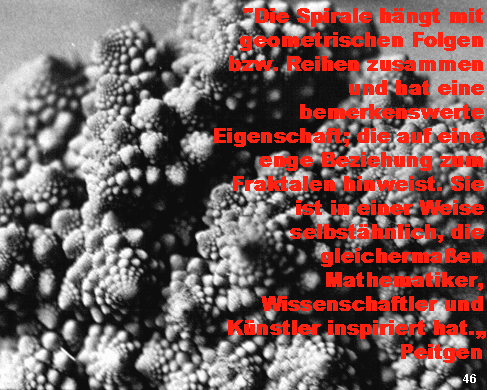














 |
||||||
 |
||||||
 |
 |
|||||
 |
 |
 |
||||
 |
 |
 |
||||
 |
 |
 |
||||
 |
||||||
 |
||||||
If a square is added to one of the longer sides of a harmonic rectangle having a side-to-side ratio F, a further harmonic rectangle with size ratio F is obtained. The square is the gnomon of the harmonic rectangle, defined as the smallest area added to a defined surface generating a surface similar to it.
The continuous addition of squares to a golden rectangle generates the spiral arrangement of self-similar squares and the harmonic spiral.
Die diagonal surface in the icosahedron is a harmonic rectangle, in which the harmonic spiral is contained, with its self-similarity so to speak a historic fractal. It is contained in the Metaeder.
From my subjective viewpoint, the progressive series and the spiral constitute the "junction" between Euclidean and fractal geometry.